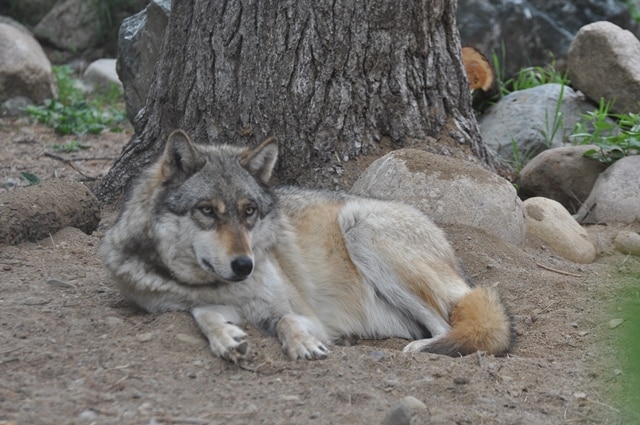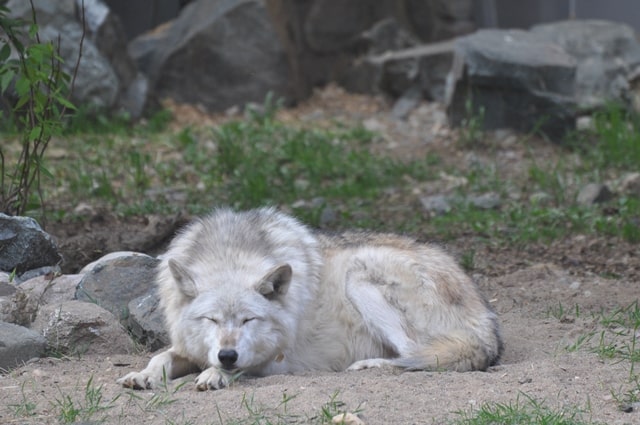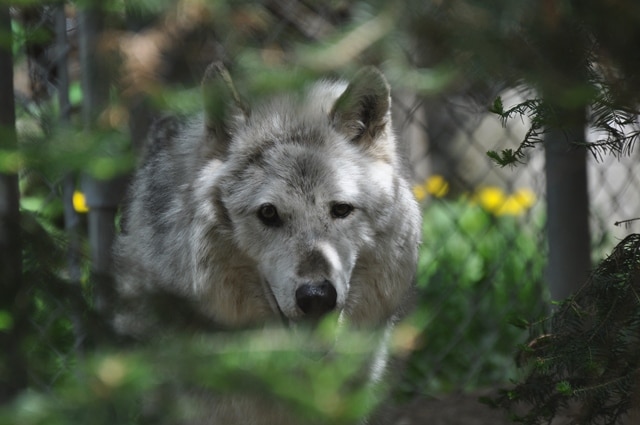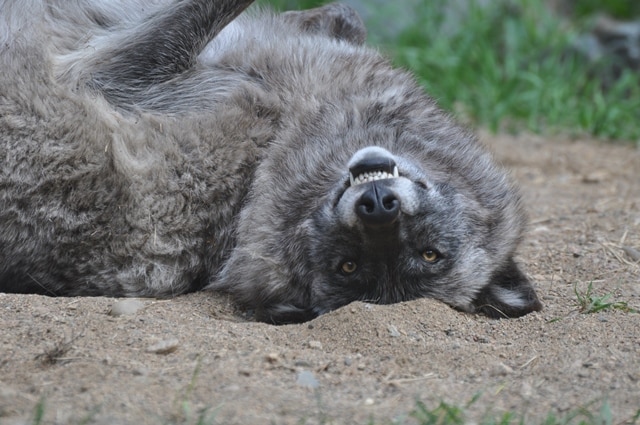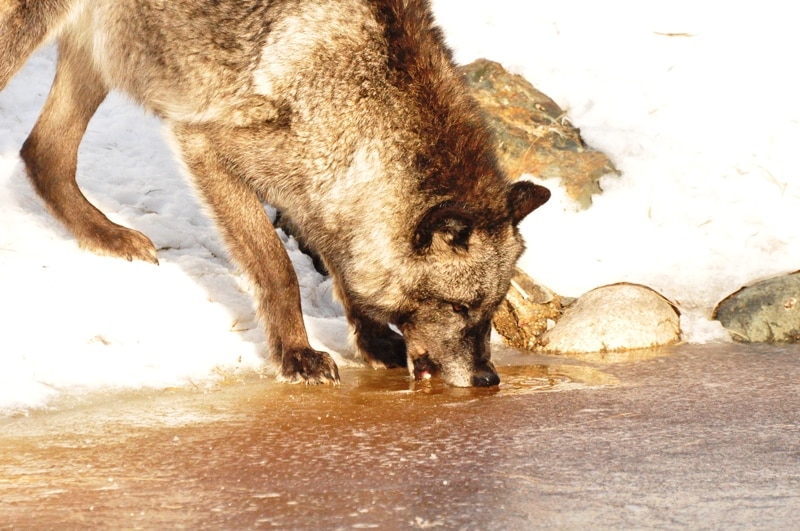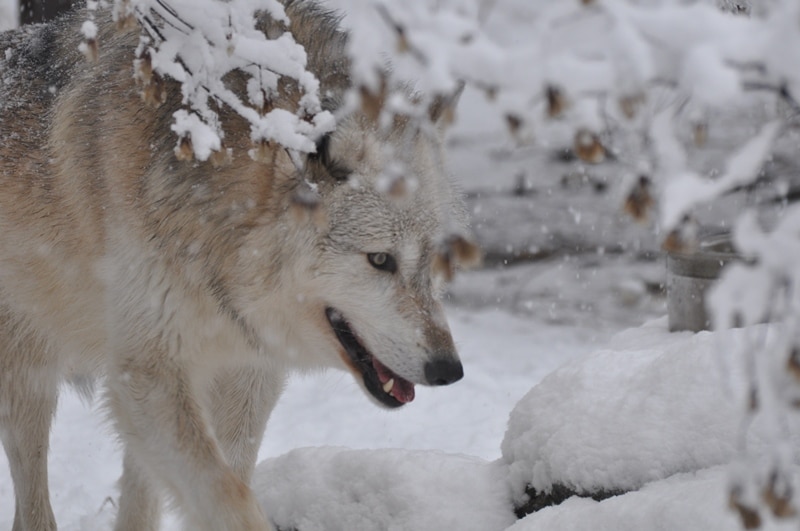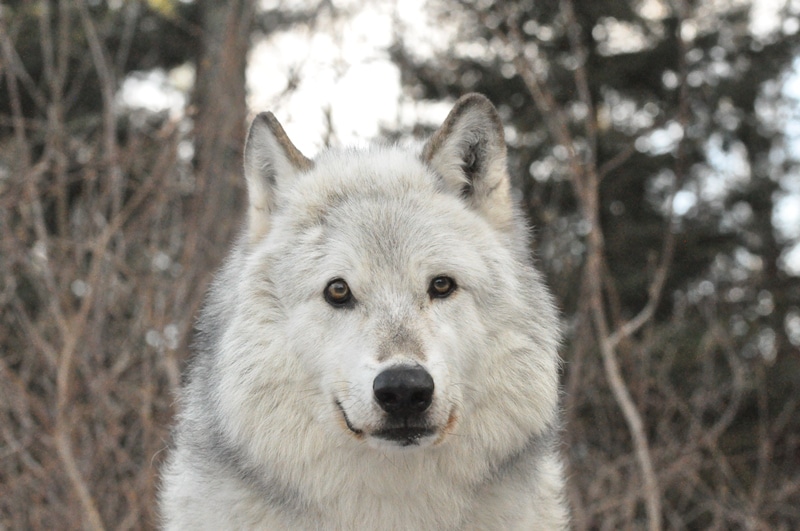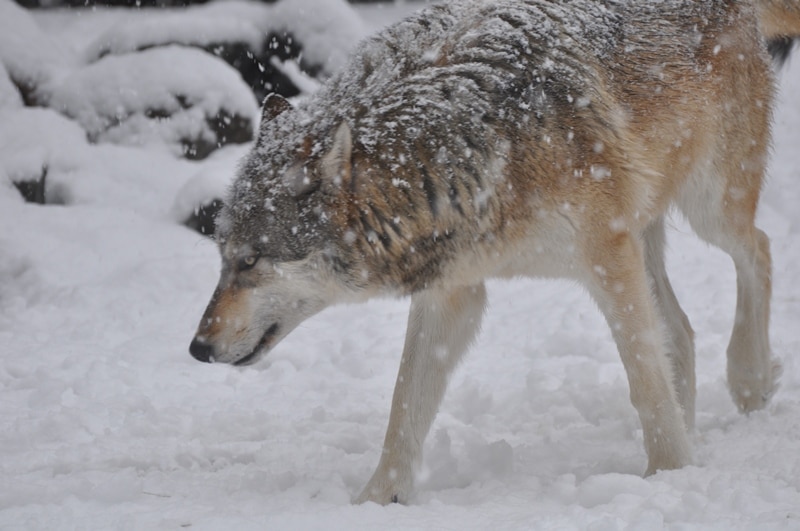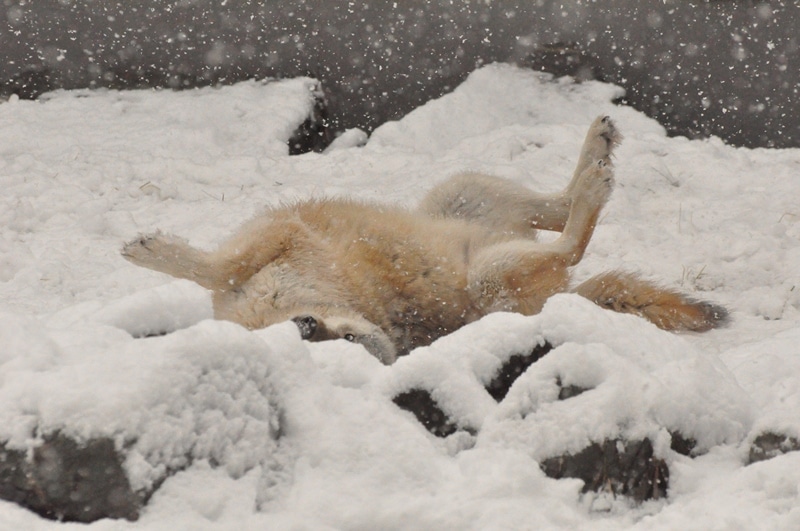We have previously discussed some of the challenges we face with Boltz. The mid-March whelping period meant that he was significantly older than our typical socialized pup. The challenge is that Boltz has some fear-avoidance behavior that makes him uneasy when there is a lot of activity in the wolf yard, specifically, unfamiliar faces. During a pup year, we rely on a number of Pup Care Participants to accomplish our 24 hour a day, 7 day a week pup care schedule. The hope is as the summer advances, Boltz will become accustom to the schedule, but if not, the wolf care staff are up to the challenge of helping Boltz through this busy season.
Archives
Denali has camped out in the sand pile in front of the wolf lab ever since the pups have arrived. On the first evening of their arrival, we brought in a pup blanket that sent Denali into an excited state and seems to be a motivation behind his recent choice of resting spots. It might be the smell of formula and raw meat that is creating the stimuli or the increased presence of human handlers; whatever the reason, the adults are staying in view of the auditorium windows despite the warming seasonal temperatures. In this photo, Denali has his eyes closed, but his ears are pricked in an alert listening mode.
Since the pups are too young to spend any significant time outdoors, Grizzer continues to use the “Pack Holding Area” adjacent to the “Wolf Care Center” and the pups nursery. One of the pups let out a howl and Grizzer immediately answered. This has been good for Grizzer who’s normally quite shy with a lot of strangers in the wolf yard, but the spring growing season has provided a good vegetative cover giving Grizzer a great vantage point to watch the pups as they settle into the routine of daily programs.
I do apologize for the delay in the logs… there only seems to be so many hours in a day. We have certainly been filling up each day with pup acquisition details and as you now know, pup socialization details. We brought the pups to the fence line to meet the adult wolves earlier this evening and Luna had a significant hormonal response most notable was her non-stop drooling when the pups were presented. A benefit of working with neonate pups is the importance of socialization with the wolf care staff that are the caretakers for the wolves entire life, the other benefit is stimulus in prolactin hormone with the adult wolves. The younger the pups when the adults meet them, the more intense the prolactin response. Usually, the wolves remain in a state of heightened cohesiveness and calm, relaxed behaviors. We hope this pup introduction will help Luna be a bit more socially engaged in all pack activities.
As the spring weather melts snow, the melt water congregates in the pond and will usually result in a light skim of ice on a cold April morning. On this morning, Luna is investigating the many pieces of bone and hide that are uncovered with a spring melt. We see a similar interest in Northern Minnesota roads and the congregation of scavengers cleaning up the winter deer-kills. It’s not unusual to see wild wolves along the road risking the traffic noise in exchange for a free meal. This winter we didn’t have a significant snow depth that would have made deer vulnerable to wolf predation, meaning that wolves are hungry coming into the pup whelping season.
Being the tallest wolf in the Exhibit Pack may have it’s advantages when involved in a chase behavior or jumping on a rock ledge, but when it comes to traveling under snow-laden branches, the only thing height gets you is a face full of snow. Denali certainly has a personality that gets him into unusual situations, although that’s part of being a wolf. Some of the first behaviors we witness in pups is “Investigative Behavior”, as neonates, pups are blind and deaf, but by 14 days of age, they start to hear and start to explore. Sniffing, listening and looking define a wolf pups at a young age and the same behaviors make wolves successful predators as adults.
We have a tentative April 6th deadline for the contractors to finish their construction of the new “Wolf Care Center”. We will then be able to reconstruct fences and allow Grizzer back in the pack holding area where he can watch the activity in the lab. He is ready to return; Each night I work at the Center, I hear Grizzer display low-throated howls and he often doesn’t subside until I spend time at the enclosure. Sometimes the pack responds, but more often, it’s just Grizzer. After the Working for Wolves program (April 15 – 17th), we should have his enclosure ready for his return. Then, he can hang out in the “Wolf Care Center” kennel while I write his logs.
Boltz is displaying a submissive ear posture as he makes his way through yet another spring snow event. Staff are sympathetic to his behavior expression of submission, we are all voicing the same opinion; Enough with the snow.. let spring begin. While we know weather affects our human lives, it’s important to remember that wildlife are affected by weather as well. There are physiological impacts of weather in the form of hypothermia, physical changes to a wolves pelage as temperatures warm and shedding of the undercoat occurs. But in captivity, we witness behavioral changes that can occur with weather. Our ambassador wolves get excited with the first snows of the year or the crisp cool air that transitions fall into winter, but by spring, the stimulus seems to be greatest as the weather warms and melt occurs. As we endure another spring snowfall, the expression of submission is more often witnessed than excitement. Maybe it’s the influence of the human handlers, wolves are definitely influenced by the energy and attitude of their caretakers.
Aidan’s displaying a behavior we term “Roll on Back”. This behavior may look like a scent roll, but it lacks the characteristic rubbing along the cheek bone that is observed in most scent rolling behavior. This “Roll on Back” posture seems to have some social components and staff have observed Aidan displaying a submissive pawing motion trying to engage another wolf in social interaction. With Aidan’s rank as a dominant male, this view of Aidan is certainly different than the posturing high ranking interactions typically encountered. The pack members seem to understand that this social behavior is independent of rank.
Many wolf logs have focused on the admirable traits of Luna, the dominant female of the Center’s Exhibit Pack. She has persevered through some significant issues and despite her smaller size, has no problem interacting (and sometimes terrifying) the larger male pack mates. One of Luna’s most common behaviors is her tenacious possession of food resources. But, it’s important to discuss this behavior in the context of pack life (not just Luna’s attitude). As a pack animal, wolves feed in social groups and there appears to be a few social rules that make life more compatible. One of these rules relates to food possession. In order to get a good meal, lower ranking wolves may pull and tug off pieces of meat from a carcass (tug-of war another candid social behavior) and if they have possession, can guard it from the most dominant pack member. Of course, they have to be confident enough to possess it, but as long as they stand over it or in Luna’s case, use the possession as a pillow, the other pack members back off.
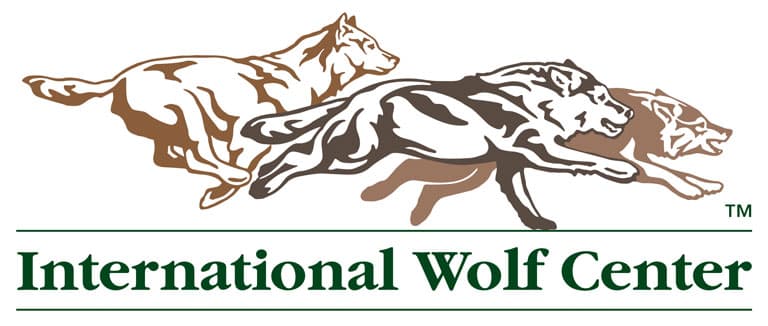
The International Wolf Center uses science-based education to teach and inspire the world about wolves, their ecology, and the wolf-human relationship.

